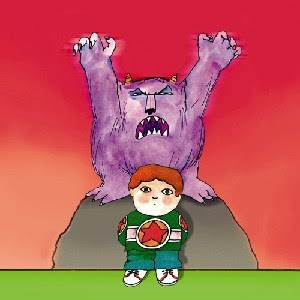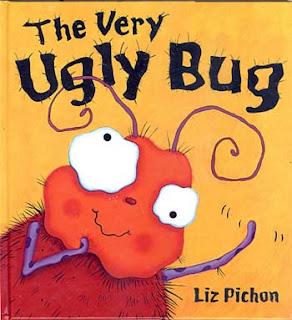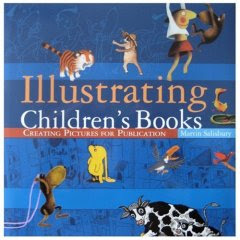Saturday 13 December 2008
end of this blog
Wednesday 14 May 2008
dissertation summary
- What did you discover that was new?
When i started the dissertation i began with a vague idea about what i wanted to look at: grotesque characters, kind of thinking it would be more of an analytical approach. As my research went on and expanded I branched out into looking at the more psychological side of grotesque characters, why the audience respond in a more positive way than initially expected and the identities represented.
- What was enjoyable about this?
At the start i knew i would have to look at british politics in the 80's due to my subject matter of grotesque characters in The Young Ones. I prepared for a lot of bias concerning Thatcher and had to sift through this to find more objective views of this era. It was one of the more interesting aspects of my research, especially when it came to tying politics into alternative comedy and grotesque characters. Also interesting to note that certain grotesque characters only really worked as grotesques depending on the era in which they were shown. The 80's was a time of sitcoms that generally represented traditional family views so The Young Ones was seen as politically incorrect, much more so than it would be now.
- What was difficult?
The only really difficult thing was what was enjoyable about it; tying all my notes and research into a piece of coherent text. Also quite difficult was editing my essay to avoid repeating myself or rambling too much, quite a hard task having to delete 500 words because they've been said before or i could get my point across in a more concise way.
Also experienced the normal difficulties everyone had of citing and referencing. Especially hard as i have a horrible habit of not writing down where i got my info or quotes from. But i just took about a week to concentrate on just referencing and the more i did it, the easier it got.
- Summary:
The Design of The Grotesque: Explorations of Grotesque Characters in a Televised and Online World.
- Theme:
An analytical and psychological look at grotesque characters, what makes them popular, what is appealing about them when what they represent is unappealing.
- Main Points:
1) Grotesques in Television
looking at The Young Ones mainly, the context in which the show was made and broadcast, the representations and the comments it made on society
2) Avatars and their Representations
pyschology of cyberspace, what makes people design unnattractive avatars, what avatars represent
3) Absurdism and the Grotesque
more of a historical look at the grotesque from the Theatre of the Absurd and absurdist plays such as Waiting For Godot, tying this play in with Bottom and the Bottom Live shows.
Conclusion
Television and comedy in particular use grotesques as something that malign the government, other topical news items and also other television shows. Grotesques seemed to become political alibis and a inherent rejection of mainstream which paradoxically became additionally mainstream and if the current trend of comedy is anything to go by, will continue to rise in popularity becoming more conventional.
Despite The Young Ones not originally being a rebellion as such, that is what it became. It was a rebellion in the way that rock ’n’ roll and punk music was. As eras, music and deviancy changes it is expected that television could do the same or vice versa, TV being a reflection of modern life or modern life being a reflection of television. Current TV show Shameless is an example of this, taking the current situation of working class, yob-ism and political circumstances and satirising them then mirrors it back to the audience.
Design of the grotesque was a comment on society of the different eras and also a comment on the identities commonly associated with the era in which they were made. This device harks back to the time of the Theatre of the Absurd and Commedia Dell’arte.
As far as user designed avatars go, it is true that the computer is becoming less of a tool and more of a mirror. Avatars are reflective of personalities and of negative features that are prevalent due to the confidence the anonymity the internet gives. As technology increases in popularity in terms of what it can do, we may not be surprised to see not just grotesque avatars designed, but the possibility of grotesque virtual worlds as a whole.
Grotesque comedy and plays seemed to provide an alternative to the more generic forms of entertainment but in current times it seems that it takes preference over the more light-hearted, ‘family’ entertainment. Even online communities and web spaces such as flickr thrive on the pessimistic and sometimes brutal honesty, with many users becoming despondent with pithy and non-specific comments and threads. Perhaps the simplest answer is the correct one and that the reason why grotesqueness, and sometimes aggressiveness, is popular is that it is just more interesting.
Freud claimed that humans are intrinsically aggressive. It's one of the two basic drives that make us tick. We can control or over-ride it, but it's got to go somewhere.
Wednesday 7 May 2008
Friday 25 April 2008
some cool vids
This one is the whole "what does Marsellus Wallace look like" bit from pulp fiction. I just think its really good how emotion and language difference were captured with different movements and different fonts.
This vid is the Abbott and Costello skit "Who's on First".. like this vid because it follows the conversation well and has the whole language games that i'm quite a fan of.
This animation is a bit from Dumb and Dumber, tis just great.. littered with deliberate spelling mistakes as well. The mistakes add to the humour whereas hopefully my animation the mistakes will add to the frustration and disorientation
more to come
Wednesday 23 April 2008
dyslexia as an excuse
It seems that now dyslexia is the new ‘bad back’ of excuses. Far too many people are becoming lazy or are looking for ways of getting out of a bit of hard work, so they blame or fake dyslexia. For the genuinely dyslexic this is infuriating. It makes a mockery out of how hard we have to work just to keep up with our peers and tars us all with the same brush. It’s a common understanding that dyslexic people struggle with reading and writing, but it is a lot deeper than that. Above all else it is a feeling of strong disorientation. Imagine yourself trying to commute in a foreign country. All the signs are in a different language and most of your time is spent in a haze of confusion merely looking around you. That is how we feel everyday and for those who blame dyslexia when really a lack of common sense or basic intelligence would have sufficed.
Not too long ago a man tried to sue a bank for letting him go overdrawn and become debt ridden just because he could not understand the bank charges. Guess what was blamed? Not just dyslexia, but the bank not understanding enough about dyslexia. Dyslexic people aren’t stupid, we know when to swallow our pride and ask for help. Usually we will prefer to work out solutions ourselves, and as someone who spent 18 years of her life going through education without dyslexia being recognised, I should know. Many dyslexics have their own coping strategies, be it learning the words they struggle with or re-reading texts multiple times, sometimes we just have to admit defeat and that we can’t do it all alone all the time.
This man who attempted to sue the bank states that he got a bad credit rating after becoming ‘inadvertently overdrawn’. It is this statement that puts a good spin doctor to shame that bothers me. I find it quite astounding that anyone can become ‘inadvertently overdrawn’. Number dyslexia aside, you know when you’ve spent a bit too much money even without checking your balance or statements, its called common sense.
The British Dyslexia Association (BDA) says that banks should do more to help the six million people in the
A date for the hearing has yet to be fixed, my guess is it’s going to stay that way.
Monday 21 April 2008
exam project proposal
The rising popularity and dependence of mobile phones has given lead to the obvious imperfections of technology. When mobile technology was first available, few thought how popular and used the text message feature would become. Initial growth of text messaging was slow, as it was originally designed for deaf and hard of hearing people, with customers in 1995 sending on average only 0.4 messages per GSM customer per month. Today text messaging is the most widely used mobile data service on the planet, with 72% of all mobile phone users worldwide or 1.9 Billion out of 2.7 Billion phone subscribers at end of 2006 being active users of texting.
Despite being an extremely popular tool, predictive text has its downfall. Users perhaps over estimate its capabilities, relying on it to fix their mistakes for them and it can be argued that this over reliance on technology is making users lazy and more careless
The Aim: To communicate the idea of miscommunication using the theory of parody and pastiche illustrate the imperfections and unreliability of this specific digital media, as if it were a dyslexic machine.
Pastiche and parody involve the imitation or, better still, the mimicry of other styles and particularly of the mannerisms and stylistic twitches of other styles… Pastiche is blank parody, parody that has lost its sense of humour…
Frederic Jameson (1988)
The Brief: Hand drawn images, animated within After Effects to demonstrate the frustration and miscommunication of predictive text. The images are in the style of an old alphabet poster, but with the words as they would appear garbled in predictive text. For example the letter ‘C’ could be ‘cat’ but the word would appear as ‘act’
The text would appear under each respective letter and be animated as if they are being written and constantly changes. Music would accompany this piece well and in particular, relaxing, royalty free music will be used, working as a good contrast to the frustration, disorientation and annoyance of a ‘dyslexic machine’. The style of the aesthetics will be ornate and old fashioned, another contrast, this time with the modernity of technology.
To avoid repetition, the animation will also contain other elements of text messages such as switching to manual enter a word, or entering a word into the phone’s dictionary.
Sunday 20 April 2008
wow, i've done something educational outside of college
A woman representing Tiger Press publishing was there to give her thoughts and tips when not only sending work off, but also when creating stories and illustrations.
- understand children, what will be important to them and what will engage them.
she noted how so many stories and images she gets sent that don't do any of the above things, which seems like a really obvious thing to do. Apparently a lot of authors assume just because they have children/grand children/slaves that makes them qualified in story telling.
- research - find out what is already on the market. Go to book shops and see what genres and styles are the biggest sellers. Read reviews of books to get other people's opinions. Research publishers to ensure you're sending your work to the right place.
- be adaptable and flexible with illustrations and look at the classics like "Not Now Bernard" and see why they succeed and the secret to their longevity.

- polite perserverance is also key i.e a follow up phone call perhaps 3 months after you've sent in your work is a good thing
Author and illustrator Liz Pichon was also there. She's written books such as 'Bored Bill' and 'The Ugly Bug'. She seems to write about animals more because apparently she's not great at drawing children... lulz. Regardless of that i've always liked her style of illustration and i looked a lot at her work last year for my exam project.


She studied graphic design and said this was more helpful than purely studying illustration as she was more aware of the layout of books, typography and the like.
Liz recommended getting an agent but when initially sending in work to publishers just send them a rought outline rather than finished artefacts of a new book as a lot tends to change.
Representing the agents was Penny Holroyde who works for the Caroline Sheldon Literary Agency.
The thing she kept coming back to was how important it was to read, revise and research. They were the key things in succeeding in getting published and getting work. She mentioned that the common trends of the moment were series fiction and the industry were lacking in more books for boys aged 7-9, like 'Dirty Bertie'


A book by Martin Salisbury was also recommended called
Illustrating Children's Books which i have ordered from
everyone's favourite shopping site as we speak.
Penny also said to think about transitional books. Many
children go from reading the wonderfully colourful picture
books, into books containing much denser text.
More research into publishers would include looking at the publishers catalogue to see what books they've done, again
making sure you're sending your work to the right place.
Another helpful hint was when to send your work out to
publishers. Apparently not after christmas and not in the March/April months, as this is just after the Bologna Children's Book Fair happens, the best time to send work out is the July period.
Penny also said that if you are just looking for illustration work, pick a scene from a story or fairy tale and illustrate it in your own style. All helpful for building up a portfolio. With the portfolio make sure there are drawings of children in there too, which seems like a pretty silly thing not to do, but apparently many illustrators dont or can't draw kids!
Other brief notes include:
- make sure everything is mounted and presented well
- cover letter is of the utmost importance, and to give it some character and personality
- stick to what you are good at rather than what you think you should do
- stick to one style of illustration rather than varying as it gives you a stronger brand and makes you more memorable.
The second talk was more about marketing yourself, which was stuff we already know, or are supposed to anyway, but still nice to have it reiterated. Online presence is so important and actually having a blog is sometimes better than a website if you're an illustrator. Readers and viewers like to interact and comment, leading to the lovely word "intercreativity"
Was also pointed out to get involved with stuff like festivals and fairs, send stuff to local papers, get publicity material and get involved with libraries.
All in all, a really good day with some excellent points raised. I felt very reassured from the whole thing, even tho it is a difficult and competitive industry, its not an impossible one.
